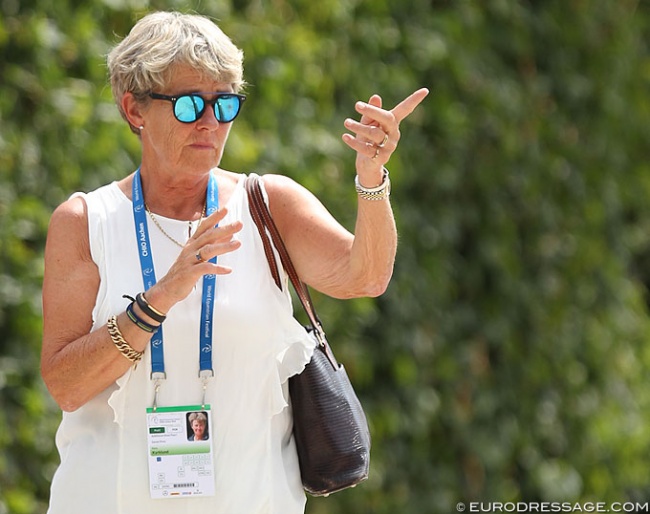
Kyra Kyrklund, long-time president of the International Dressage Riders Club, has worked with the Dressage Judging Working Group to establish 19 recommendations/directives to improve dressage judging. While many of the recommendations are no brainers, several of them raise questions. Kyrklund has taken up her pen to explain the thought process behind the recommendations. Here is her first piece:
"Create a More Fair and Consistent Method for Dressage Judging"
As the representative of the IDRC, I have spent two years on the FEI Dressage Judging Working Group (DJWG). The DJWG was asked by the FEI to do 4 things (and I am summarizing here):
- To look at the current dressage judging system.
- To make look at other subjectively judged sports.
- To identify and make recommendations for improvement of the current FEI dressage judging system
- To look at, evaluate, and make recommendations for improvement for the measures introduced after the FEI 2009 Dressage Task force (those measures included: the introduction of 7 judges for major events, the introduction of a Judges Supervisory Panel, the introduction of half points and the judge’s education system).
In my role as representative of the IDRC, I worked with our members and with the FEI, the IDTC, top dressage riders and judges. In addition I, along with the other members of the DJWG, I have spent years learning from top researchers in the fields of neuroscience and sports psychology, and reviewing how similar sports are judged.
The goal of the DJWG has been to help the FEI create a more fair and consistent method by which judges can judge dressage classes at the elite level.
The Final Report of the DJWG, published on November 8th, is an important step forward but far from the final step for improvement of our sport. I encourage you all to read the report in full and to give us your thoughts and comments.
The DJWG report provides 19 recommendations for improving fairness by improving the consistency of judgment and decision making.
Today I would like to discuss the first of those 19 recommendations. Over later weeks our Board will address other of the 19 recommendations.
"RECOMMENDATION 1: The DJWG recommends that all future standard judging directives and references (e.g. Code of Points etc) be formatted to ensure that they are relevant to the specific viewing position of each judge. The DJWG consider that judging directives and references should not be ‘silent’ on what is able to be observed/not observed from the various judging positions, as this leaves the priority of observations to the discretion of individual judges. Such discretion could lead to inconsistent judgements and a lack of fairness to athletes.”
As you can see, this recommendation suggests that judging directives should be amended to account for different judging positions.
When have you ever seen a judge at C give a 10 for a horse that has a brilliant front leg movement and the judges at E and B give a 5 because the hind legs are not engaged. That should be possible.
If a judging methodology properly describes to judges what they should be looking for from each position it should enable and empower judges to focus on the thing that is important when viewed from a specific letter.
Insofar as you have not tried this, next time you are at a show, you should, at or near ground level, sit as close to behind the judge at C as you can. Then change your position to sit at ground level as close to behind E or B. The perspectives are very different, particularly if you are as close to the arena as the judges are. They do not have a bird’s eye view.
Creating precise judging directives will help both the judges and the competitors. The judges will have specific things to look for. Also this will give competitors the opportunity to read and understand what the judges are looking for from their respective perspectives and to use those directives as goals for training and showing.
- Kyra Kyrklund
Photo © Astrid Appels
Related Links
Dressage Judging Working Group Presents 19 Recommendations to Improve System
Dressage Judging Working Group Makes Recommendations for 2018 Rule Amendments
Christoph Hess: "The New Shortened Grand Prix Test is a Step in the Wrong Direction"
Olympia Reveals Details of Shortened Grand Prix Pilot Project
World Cup Pilot Project Shortened Grand Prix Test Published
FEI To Test Shortened Grand Prix Version at 2018 CDI-W London